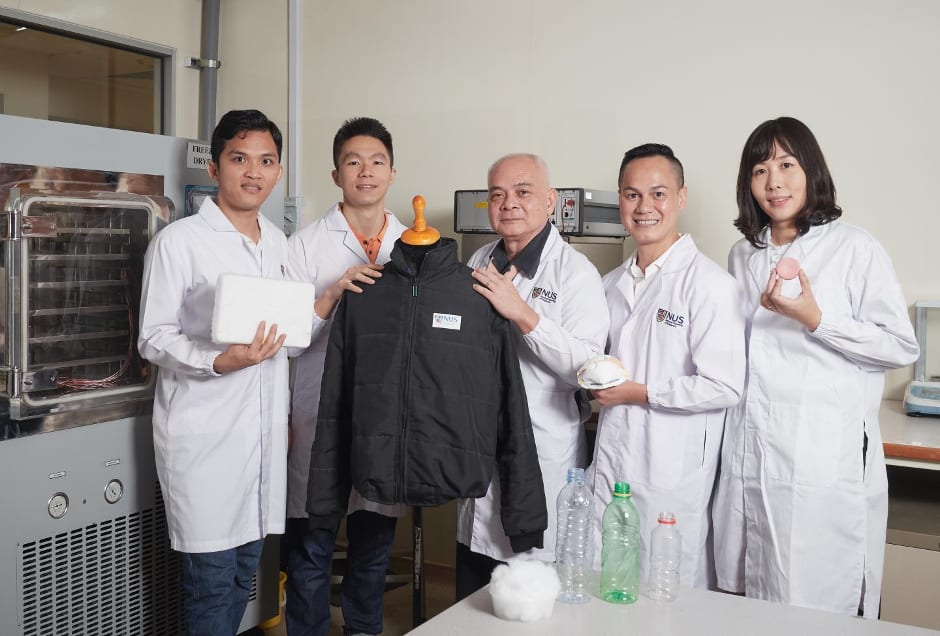
Plastic bottles are commonly made from polyethylene terephthalate (PET), which is widely recycled. The PET aerogels, developed by a team led by National University of Singapore (NUS) researchers, are said to be soft, flexible, durable, extremely light and easy to handle.
Applications could include heat and sound insulation for buildings, or as a lightweight lining for firefighter coats and carbon dioxide absorption masks used by firefighters.
The breakthrough was achieved by a research team led by Associate Professor Hai Minh Duong and Professor Nhan Phan-Thien from the Department of Mechanical Engineering at NUS Faculty of Engineering. The technology to produce PET aerogels was developed in collaboration with Dr Xiwen Zhang from the Singapore Institute of Manufacturing Technology (SIMTech) under the Agency for Science, Technology and Research (A*STAR).
"One plastic bottle can be recycled to produce an A4-sized PET aerogel sheet,” said Assoc Prof Duong. “The fabrication technology is also easily scalable for mass production. In this way, we can help cut down the harmful environmental damage caused by plastic waste.” The work was published in Colloids and Surfaces A in August 2018.
Globally, the annual consumption of plastic bottles is expected to exceed half a trillion tons per year by 2021
"Our PET aerogels are very versatile. We can give them different surface treatments to customise them for different applications,” said Prof Nhan. “For instance, when incorporated with various methyl groups, the PET aerogels can absorb large amounts of oil very quickly. Based on our experiments, they perform up to seven times better than existing commercial sorbents, and are highly suitable for oil spill cleaning."
Another application is to harness the heat insulation property of the PET aerogels for fire safety applications.
Existing firefighter coats are bulky and often used with other breathing and safety equipment. When coated with fire retardant chemicals, the novel lightweight PET aerogel is claimed to demonstrate superior thermal resistance and stability. It can withstand temperatures of up to 620oC, which the NUS team said is seven times higher than the thermal lining used in conventional firefighter coats, but weighs around 10 per cent of the weight of conventional thermal lining.
Prof Nhan said: "By adopting PET aerogels that are coated with fire retardants as a lining material, firefighter coats can be made much lighter, safer and cheaper. It is also possible to produce low-cost heat-resistant jackets for personal use."
Similarly, when coated with an amine group, the PET aerogel can quickly absorb carbon dioxide from the environment and its absorption capacity is reportedly comparable to materials used in gas masks. The team demonstrated this by embedding a thin layer of PET aerogel into a commercial fine particle mask to create a prototype that absorbs dust particles and carbon dioxide effectively.
The NUS researchers are looking to work with companies to commercialise the technology.




Glasgow trial explores AR cues for autonomous road safety
They've ploughed into a few vulnerable road users in the past. Making that less likely will make it spectacularly easy to stop the traffic for...